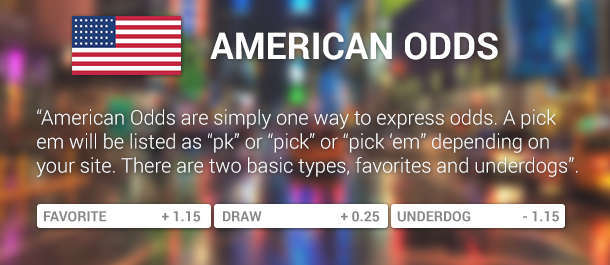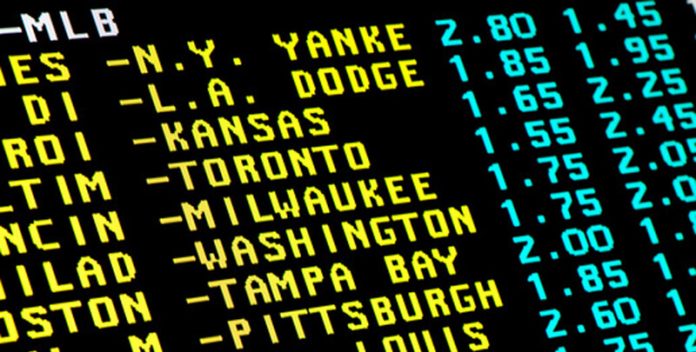If you are a beginner just starting out in sports gaming, odds can be confusing. Every sports betting site you look at has odds represented, but they look different depending on what website you are viewing, because each country has a different way of representing odds. However, with a little explanation, you can become familiar with odds and how the odds help you calculate both the payout you would receive for a bet placed, as well as the risk you are taking on that particular bet.
What Are Odds?
In the simplest terms, odds predict how likely an event is going to happen. In any sporting event, there are a certain number of possibilities that a particular outcome will occur. For example, if you are a New England Patriots fan, during the last Super Bowl, there were only a certain number of outcomes to that game: either the Patriots would beat the Eagles to win the game, or they would lose to the Eagles. The simplest odds for that game (very simplified, of course) would be that the Patriots had a 50% chance of winning the Super Bowl. Depending on where you live, the odds in sports are represented as a decimal, a fraction, or an odds system called American odds. You can choose to learn the odds in the system the way they are presented to you, or you can convert the odds into a format that is easy for you to understand.
American Odds

American odds differ from the odds used in any other country. First, you need to know that American odds start with a + (positive sign) or a – (negative sign). A positive sign shows you that if you bet 100, whatever the positive sign indicates is the amount of money you would win on a $100 bet. A negative sign shows you the amount you have to bet in order to make a profit of $100. While this sounds difficult, an example should clear things up.

An Example for American Odds
If you wanted to bet on the game between the Patriots and the Eagles, for example, first you have to look at the handicap. The handicap is the amount of points they have to win by in order for you to win your bet. So, if the Patriots had a -7 handicap, and they won by over 7 points, it is called covering the spread, and you would win your bet. If the odds that the Patriots won were -124, and they covered the spread, you would make a $100 profit on your bet in addition to the $124 you bet for the odds. If the Eagles’ odds were +112, and they covered the spread, you would win your $100 original bet plus $112. While using a $100 bet for an example is an easy way to demonstrate your winnings on a bet, you can actually bet any amount you choose, and many sites have odds calculators to help you convert whatever bet you wish to make to show you your potential profit.
Decimal Odds
While we discussed that American odds are used in the United States to calculate the odds of a sporting event, other countries use different methods to show odds. For example, countries in much of Europe, Australia and Canada use decimal odds to calculate what the chances are of a particular event happening. In decimal odds, the decimal number represents the potential return on a bet, including the amount you staked in order to place the bet.
An Example of Decimal Odds
For example, let’s return to the Patriots and Eagles Super Bowl matchup; if you bet $100 that the Patriots would win, and the decimal odds given were 2.270, the amount of money won if the Patriots won the game would be $127.00, which represents the amount of money you put in to begin with, as well as the amount of money you won on the bet. If you bet $100 that the Eagles would win, and the decimal odds given were 3.390, you would win $239 if the Eagles won the game, which again represents the amount of money you staked for your bet, as well as the amount of money you won.
Fractional Odds
Fractional odds are almost exclusively used in the United Kingdom and Ireland. In the beginning of sports gaming, bettors were betting on horse races, and fractional odds were easy to calculate at the tracks. Fractional odds represent the easiest form of gaming odds, as it is easy to see the numbers represented by the bet, as well as the risk you are taking if you bet those numbers. The first number ahead of the line drawn, or the numerator, represents the amount that your bet will return to you, and the second number to the right of the line drawn, or the denominator, represents the amount of money you bet, in simplified fraction form.
An Example of Fractional Odds
For an example of how fractional odds are represented if you bet that the Patriots will beat the Eagles using 10/15 fractional odds, for every $150 you bet, you would have a net profit of $100, which means you would win $250 total—the amount you won plus the amount of money you bet in the first place. If you bet on the Eagles in the Super Bowl, and they were the underdog at 5/1 odds, if the Eagles won the game you would win $500 for every $100 you bet. If you bet $100 the Eagles would win, then you would win $600 total, which would be the $100 you originally bet, as well as the $500 profit from the odds of the bet.
In addition, fractional odds can be added to the point spread in some sports, such as football and soccer. If we return to our Super Bowl bet above, if you bet that the Patriots would win, and the point spread was attached to the fractional odds, it would have been 10/15 +7, so in order to win this bet, the Patriots would have to win by more than seven points to cover the spread.
Fractional Odds and Decimal Odds Conversion
To convert fractional odds to decimal odds, you will need to change the fraction into decimal odds. If you use the 10/15 odds from the example above, the conversion would look like this: 10/15= 10+15=25.00. If you had 5/1 odds: 5/1=5+1 or 6.
While all of this may be a bit confusing, it is important to remember that nearly all of the online and brick and mortar sports book locations have conversion tables for you to look up odds conversions, depending on the country or sport you are betting on. If you can’t find a conversion table, you can always use an app on your phone, tablet or laptop. Remember, the odds are there for you as a measurement of your chances of winning a particular game on that particular day, and the odds change repeatedly depending upon conditions of the game, injuries to key players, and other factors. If you can understand the odds conversion, you will understand the chances of winning on your wagers.
Disclaimer: All images are copyright to their respective owners and are used by USA Online Casino for informational purposes only.










